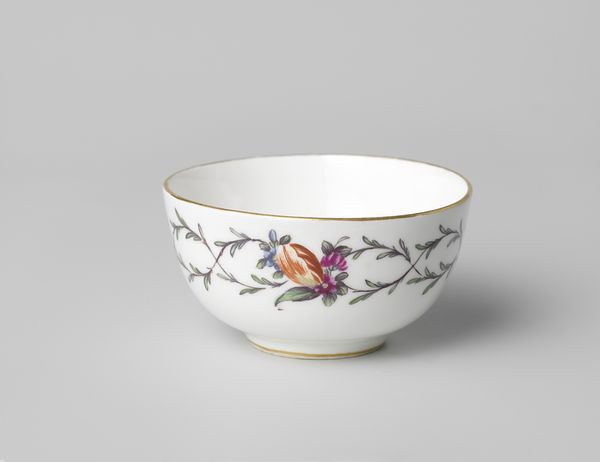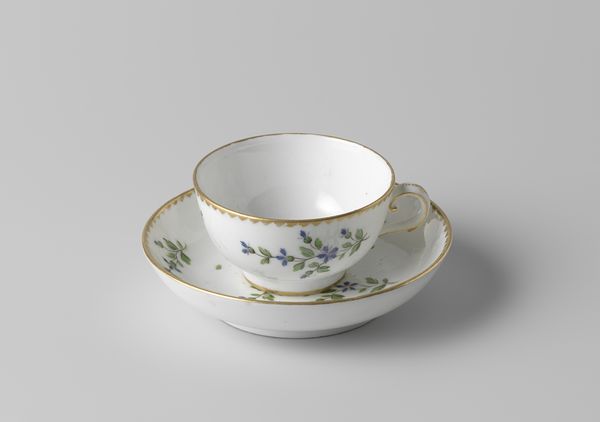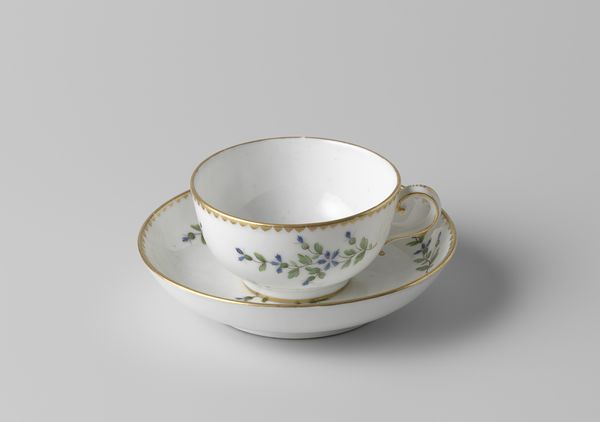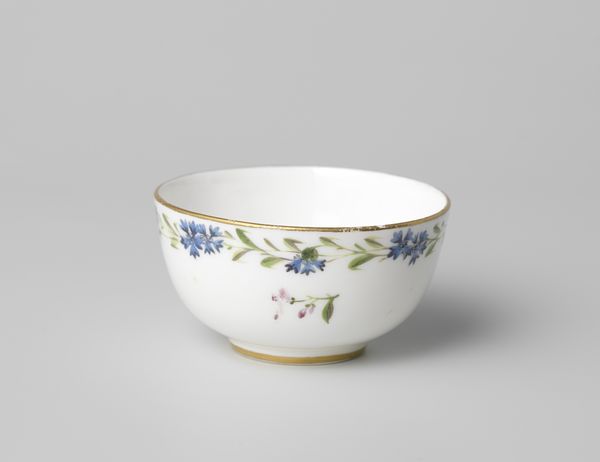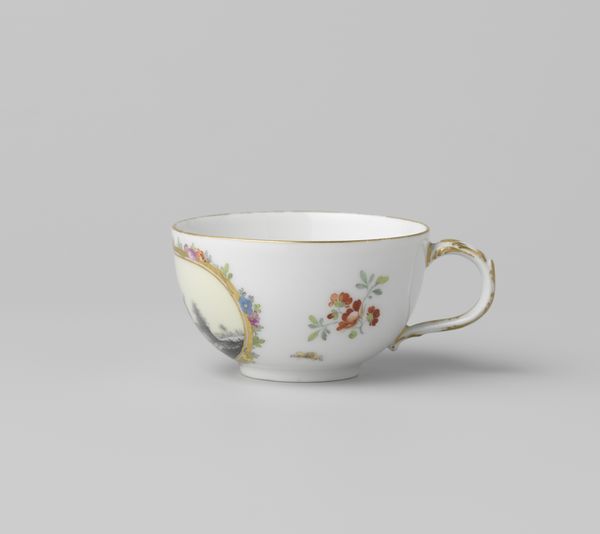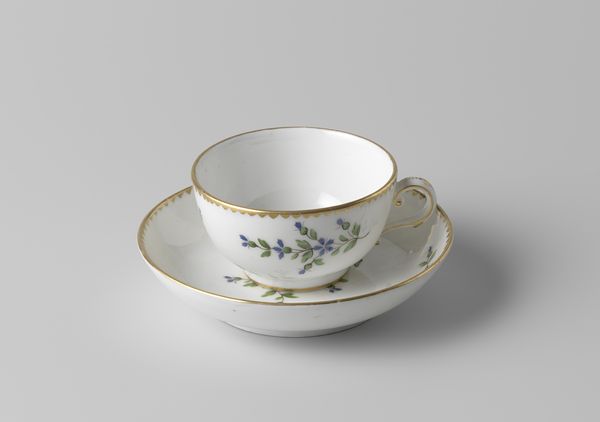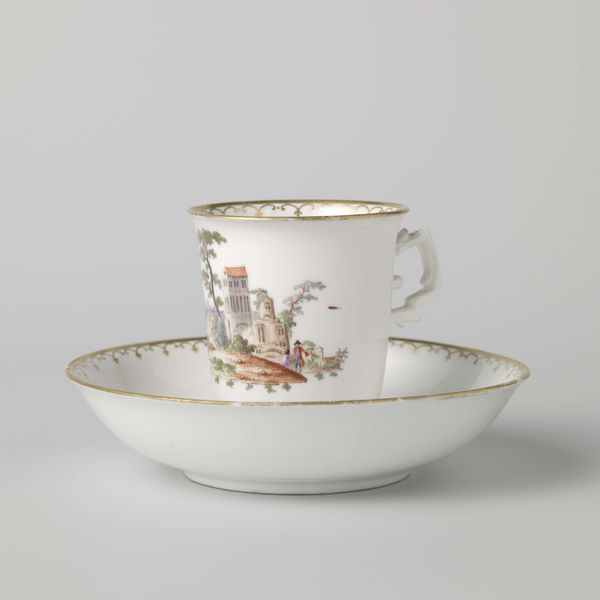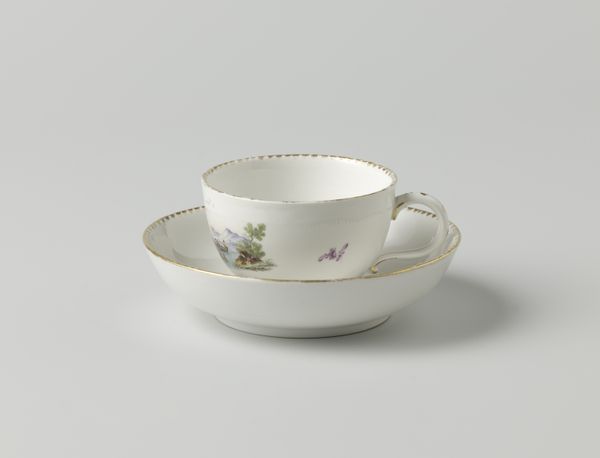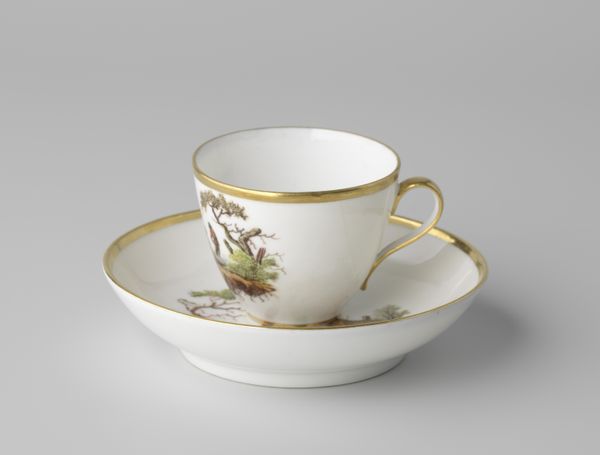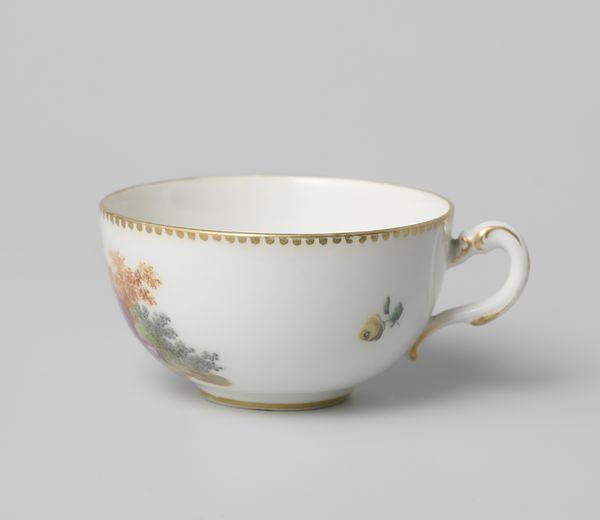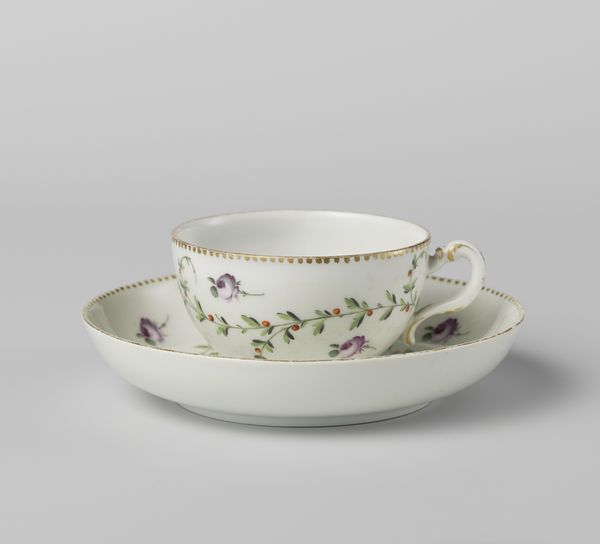
Dimensions: height 4.3 cm, width 9.4 cm, diameter 7.9 cm
Copyright: Rijks Museum: Open Domain
Editor: This porcelain tea service for two, or *tête-à-tête*, from around 1778 to 1782 by Loosdrecht, is incredibly delicate. The floral details are exquisite, but it feels almost… performative. What does it suggest to you in terms of social history? Curator: It certainly speaks to the rising bourgeois culture of the late 18th century, doesn’t it? Tea drinking was a social ritual, often heavily stylized. Having such a delicate and refined service suggests a desire to emulate the aristocracy and project an image of taste and refinement. How do you perceive its display within the Rijksmuseum, a very public institution? Editor: I think placing it here underscores its function as a signifier of status. It's like saying, "This is an object worthy of preservation and public admiration." Do you think that original intention, to signal wealth, changes through the museum's institutional validation? Curator: Absolutely. The museum transforms its meaning. Instead of simply representing wealth, it becomes an artifact that we can use to study and understand past social dynamics. The Rococo style itself—with its emphasis on asymmetry and natural motifs—served as a political function in establishing status. The museum is also a political entity; it dictates whose history, art, and objects are worth preserving, protecting, and honoring. How much do these Rococo forms have staying power for you? Editor: Now that you're saying that, I'm thinking that these porcelain sets maybe offered ordinary people to perform a royal-ish life with beauty and art in the things surrounding them. Thanks to you, I’ve seen this object in a whole new way. Curator: The pleasure's all mine. Analyzing how seemingly mundane objects like this tea service can unlock broader understandings of social history, it is such a worthwhile experience.
